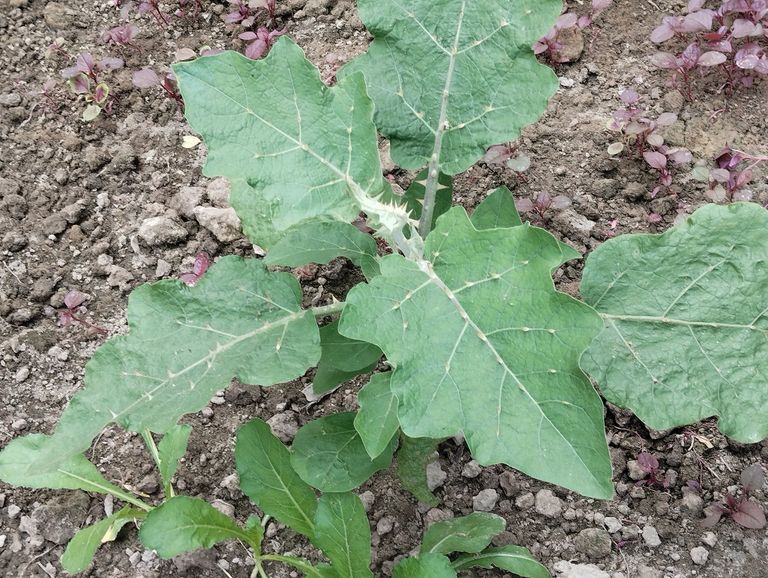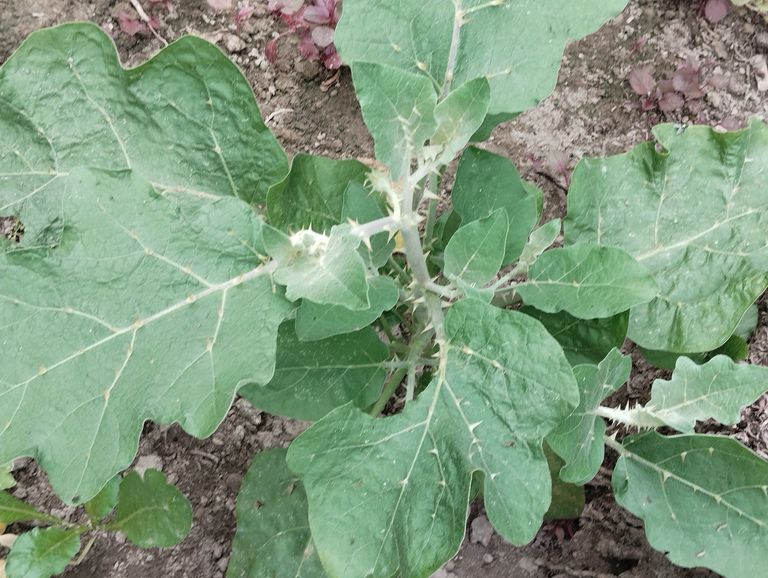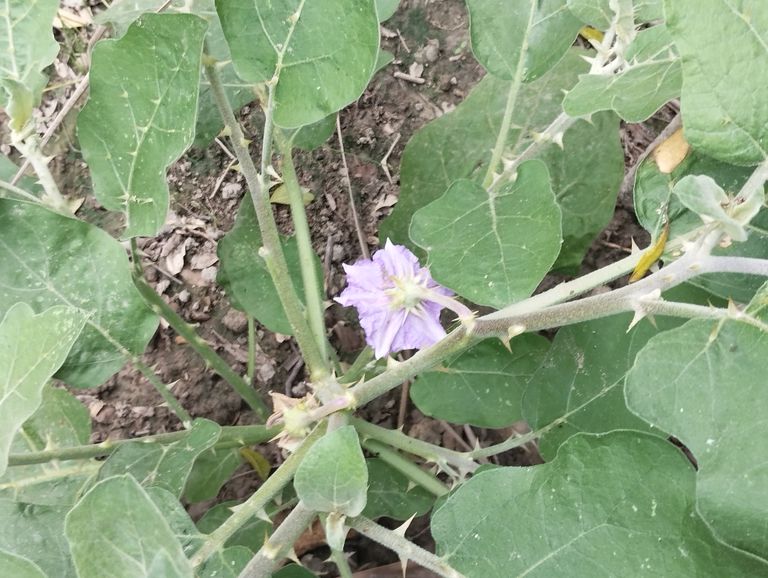
Guide to Eggplant Cultivation Begun Chash Paddhati.
Eggplant, also known as brinjal or aubergine, is a popular vegetable crop widely grown in tropical and subtropical regions. Its adaptability to various climates makes it an essential crop for farmers. This article outlines the steps for cultivating eggplant, including soil preparation, planting, maintenance, and harvesting.
Step 1: Understanding the Basics
Eggplant thrives in warm climates and requires temperatures between 25°C to 30°C for optimal growth. It is a long-duration crop that can yield fruit within 60-80 days of transplanting, depending on the variety.
Step 2: Selection of Varieties
Choosing the right variety is crucial for better yield. Common varieties include:
Local Varieties: High flavor and suitable for specific regions.
Hybrid Varieties: High-yielding and resistant to pests and diseases (e.g., Pusa Purple Long, Arka Nidhi, Mahyco).
Step 3: Soil Preparation
Eggplants grow best in well-drained, loamy soil with a pH between 6.0 and 7.0.
- Land Preparation:
Plow the land 2-3 times to ensure a fine tilth.
Remove weeds and add organic matter like decomposed cow dung or compost (8-10 tons per acre).
- Soil Testing: Check for nutrient deficiencies and add fertilizers accordingly.
Step 4: Seed Selection and Nursery Preparation
- Seed Selection: Use high-quality seeds with a germination rate above 90%.
- Nursery Preparation:
Prepare a raised bed (1 meter wide and convenient length).
Mix soil, sand, and organic manure in a 1:1:1 ratio.
Sow seeds 1-2 cm deep, keeping 2-3 cm spacing between them.
Water regularly and cover with a thin layer of straw for moisture retention.
Step 5: Transplanting
- Seedlings Readiness: Transplant seedlings when they are 4-6 weeks old and about 10-12 cm tall with 4-5 true leaves.
- Field Layout:
Maintain a spacing of 60 cm x 60 cm for bush varieties.
For hybrid or sprawling varieties, use 75 cm x 75 cm.
- Transplanting Process:
Transplant during the evening or cloudy weather to reduce stress.
Irrigate the field immediately after planting.
Step 6: Fertilizer Management
Eggplants are nutrient-intensive crops. Apply fertilizers based on soil testing results:
- Basal Dose: Apply 15-20 kg nitrogen (N), 40-50 kg phosphorus (P), and 20-25 kg potassium (K) per acre before transplanting.
- Top Dressing: Apply nitrogen in two splits – the first after 30 days and the second after 60 days of transplanting.
Step 7: Irrigation
Eggplants require consistent soil moisture for proper growth:
- Irrigation Schedule:
Water immediately after transplanting.
Continue every 7-10 days, depending on the soil and weather.
- Avoid Overwatering: Overwatering can lead to fungal diseases like root rot.
Step 8: Weed and Pest Management
- Weeding: Perform 2-3 manual weedings during the crop cycle. Mulching can reduce weed growth.
- Pests:
Common Pests: Fruit borers, aphids, and whiteflies.
Control Measures: Use neem-based insecticides or integrated pest management (IPM) practices.
- Diseases:
Common Diseases: Fusarium wilt, bacterial wilt, and leaf spot.
Control Measures: Ensure proper drainage and apply fungicides like carbendazim if needed.
Step 9: Harvesting
Eggplants are ready for harvest 60-80 days after transplanting, depending on the variety.
- Signs of Maturity: Fruits should be shiny and firm but not overripe.
- Harvesting Method: Harvest manually with a sharp knife or scissors to avoid damage to the plant.
Step 10: Yield and Post-Harvest Management
- Yield:
Local varieties: 8-10 tons per acre.
Hybrid varieties: 15-20 tons per acre.
- Post-Harvest Handling:
Sort and grade the fruits based on size and quality.
Pack in ventilated baskets or boxes for transportation.
Conclusion
Eggplant cultivation is a profitable venture with proper management practices. By selecting the right variety, maintaining soil health, and adopting modern pest management techniques, farmers can achieve high yields and quality produce.


Controlling Pest Infestation in Eggplant Leaves: A Comprehensive Guide
Eggplant, also known as brinjal, is a widely cultivated vegetable loved for its versatility in cooking. However, one of the major challenges faced by farmers and gardeners is pest infestation on eggplant leaves. These infestations not only reduce yield but also affect the quality of the produce. In this blog, we will discuss common pests that attack eggplant leaves, their impact, and effective ways to control them.
Common Pests Found on Eggplant Leaves
- Aphids
Appearance: Small, soft-bodied insects, green, black, or yellow in color.
Damage: Aphids suck the sap from leaves, causing yellowing, curling, and stunted growth. They also excrete a sticky substance called honeydew, which promotes fungal growth.
- Whiteflies
Appearance: Tiny white insects found on the underside of leaves.
Damage: They suck plant sap, leading to yellowing, wilting, and reduced vigor. Like aphids, they also produce honeydew.
- Leaf Miners
Appearance: Small larvae that burrow within leaves.
Damage: They create winding tunnels on leaves, reducing photosynthesis and weakening the plant.
- Spider Mites
Appearance: Tiny, spider-like pests often found on the undersides of leaves.
Damage: They cause speckled, discolored patches and may lead to leaf drop if infestation is severe.
- Flea Beetles
Appearance: Small, shiny black or bronze beetles that jump when disturbed.
Damage: They chew small holes in leaves, giving a "shot hole" appearance. Severe infestations can destroy seedlings.
Symptoms of Pest Infestation
Yellowing, curling, or wilting leaves
Holes or tunnels in leaves
Presence of webbing or sticky substances on leaves
Stunted plant growth
Visible pests on the underside of leaves
Prevention Methods
- Regular Monitoring
Inspect plants weekly to identify early signs of infestation. Pay special attention to the undersides of leaves.
- Crop Rotation
Avoid planting eggplants in the same spot year after year to reduce pest buildup in the soil.
- Healthy Spacing
Ensure proper spacing between plants for good airflow, which helps prevent pest outbreaks.
- Companion Planting
Plant pest-repelling crops like marigold, basil, or garlic near eggplants. These plants act as natural deterrents.
- Sanitation
Remove and destroy any infested or damaged leaves to prevent the spread of pests.
Natural Pest Control Methods
- Neem Oil Spray
Mix 2 teaspoons of neem oil with 1 liter of water and a few drops of dish soap. Spray this solution on both sides of the leaves weekly. Neem oil disrupts the life cycle of pests like aphids, whiteflies, and spider mites.
- Garlic-Chili Spray
Blend garlic and chili with water, strain the mixture, and spray it on the leaves. This natural remedy deters most pests.
- Soap Water Spray
Mix 1 tablespoon of mild liquid soap with 1 liter of water. Spray directly on pests to kill them. Avoid using detergent-based soaps.
- Biological Control
Introduce beneficial insects like ladybugs, lacewings, and parasitic wasps that feed on common eggplant pests.
Chemical Control Options
If natural methods fail to control severe infestations, consider using chemical pesticides. Always follow label instructions and choose pesticides that are safe for vegetables. Common options include:
- Imidacloprid: Effective against aphids and whiteflies.
- Spinosad: Works well for controlling leaf miners and flea beetles.
- Pyrethroids: Broad-spectrum insecticides for general pest control.
Post-Treatment Care
- Wash the Plants
After using sprays or pesticides, rinse the plants with clean water after a few days to remove residues.
- Fertilize the Soil
Provide balanced nutrients to help plants recover from stress caused by pests.
- Regular Monitoring
Continue checking plants for pests even after treatment to catch any re-infestations early.
Conclusion
Pest infestation in eggplant leaves can significantly impact the health and yield of your crop. By adopting a combination of preventive measures, natural remedies, and chemical controls when necessary, you can protect your eggplants effectively. Remember, early detection and consistent care are key to maintaining a healthy, pest-free garden.

Bengali Beguner Bharta (Mashed Eggplant) Recipe
Introduction:
Beguner Bharta, a traditional Bengali dish, is a flavorful and smoky mashed eggplant delicacy. Loved for its simplicity and taste, this dish is a staple in many Bengali households. Served with steamed rice and lentils, it makes for a wholesome and satisfying meal. Here's an easy-to-follow recipe to make this delicious dish at home.
Ingredients:
Eggplants (aubergine): 2 medium-sized
Mustard oil: 2 tablespoons
Onion: 1 medium, finely chopped
Green chilies: 2-3, finely chopped
Garlic cloves: 2-3, finely chopped or mashed
Salt: To taste
Fresh coriander leaves: A handful, chopped (optional)
Preparation:
Step 1: Preparing the eggplants
- Wash the eggplants thoroughly and pat them dry.
- Prick the eggplants in several places with a fork or knife to ensure even cooking.
- Roast the eggplants directly over a gas flame, grill, or in an oven. Turn occasionally until the skin is charred and the flesh inside becomes soft. This should take about 10-15 minutes.
- Once roasted, place the eggplants in a bowl and cover them with a lid for 5 minutes. This will help loosen the skin.
- Peel off the charred skin, and mash the roasted eggplant flesh with a fork or your hands until smooth.
Step 2: Mixing the flavors
- Heat mustard oil in a pan until it reaches a smoking point, then let it cool slightly. Mustard oil gives the dish its authentic Bengali flavor.
- In a mixing bowl, combine the mashed eggplant with finely chopped onions, green chilies, garlic, and salt.
- Add the cooled mustard oil and mix thoroughly. Adjust salt and chilies as per your taste.
Step 3: Garnishing (Optional)
Sprinkle freshly chopped coriander leaves for a hint of freshness.
Serving Suggestions:
Serve Beguner Bharta with steamed rice and a side of dal (lentil soup).
Pair it with flatbreads or parathas for a quick and delicious meal.
Tips for the Perfect Bharta:
- Choose fresh, firm, and large eggplants for the best results.
- For added smokiness, you can roast the eggplants over a wood or coal fire.
- Some variations include adding fried onions or tomatoes for extra flavor.
- If mustard oil isn’t available, you can use olive oil, but the taste will differ slightly.
Conclusion:
Beguner Bharta is a simple yet incredibly flavorful dish that captures the essence of Bengali cuisine. Its smoky aroma, combined with the sharpness of mustard oil and chilies, makes it an irresistible side dish. Perfect for both everyday meals and special occasions, this recipe is a must-try for anyone who loves authentic Bengali flavors.

Is Eggplant Farming Profitable? A Deep Dive into Eggplant Business
Eggplant, commonly known as brinjal or aubergine, is a widely consumed vegetable around the world, particularly in South Asia. Its popularity as a versatile and nutritious ingredient makes it a lucrative crop for farmers. If you're considering venturing into eggplant farming, understanding its profitability is crucial. This blog explores the factors contributing to the success of the eggplant business and how you can make it a sustainable income source.
Why Choose Eggplant Farming?
Eggplant farming is gaining popularity due to its adaptability, consistent demand, and profitability. Here are some compelling reasons to consider this business:
- High Market Demand:
Eggplant is a staple in various cuisines and has a steady demand in both local and international markets. This ensures a reliable market for your produce.
- Short Growing Period:
Eggplants mature quickly, typically within 60–90 days, allowing multiple harvests in a year. This short cycle ensures quick returns on investment.
- Diverse Varieties:
There are several eggplant varieties, including round, long, and striped types, each catering to different consumer preferences. Diversification helps capture a broader market.
- Health Benefits:
Eggplant is rich in fiber, vitamins, and antioxidants, making it a popular choice among health-conscious consumers.
Steps to Start an Eggplant Business
- Market Research
Conduct thorough market research to understand demand, preferred varieties, and pricing trends in your target market. Identifying potential buyers like wholesalers, retailers, and exporters will help secure your sales.
- Selecting the Right Land
Choose fertile, well-drained soil with a pH level of 5.5–6.5. Ensure the land receives adequate sunlight and water for optimal growth.
- Seed Selection and Planting
Invest in high-quality seeds of disease-resistant varieties. Use raised beds or rows for planting, ensuring proper spacing for airflow and sunlight.
- Fertilization and Irrigation
Eggplants require regular watering, especially during flowering and fruiting stages. Apply organic or chemical fertilizers based on soil tests to maintain soil fertility.
- Pest and Disease Management
Common pests like aphids, whiteflies, and fruit borers can affect yields. Implement integrated pest management (IPM) techniques, such as crop rotation and biological controls, to reduce infestations.
- Harvesting and Post-Harvest Care
Harvest eggplants when they are shiny and firm. Handle them carefully to avoid bruises and store them in cool, dry conditions to maintain freshness.
Profitability Analysis
- Initial Investment
The initial cost includes land preparation, seeds, fertilizers, labor, and irrigation setup. These costs vary depending on the scale of farming.
- Yield per Acre
On average, an acre of land can yield 20–25 tons of eggplants under proper care.
- Selling Price
The selling price of eggplant depends on the variety and market conditions. In local markets, it ranges from $0.5 to $1 per kilogram, while export-quality eggplants fetch higher prices.
- Profit Margin
After deducting expenses like labor, fertilizers, and pest control, farmers can expect a profit margin of 30–40% in a good season.
Maximizing Profits in the Eggplant Business
- Diversify Product Lines:
Apart from fresh eggplants, consider selling value-added products like dried eggplant chips or pickles.
- Focus on Quality:
High-quality, organically grown eggplants can fetch premium prices.
- Explore Export Opportunities:
Countries like the USA, UK, and Middle Eastern nations have a high demand for eggplants. Partnering with export agencies can increase profits.
- Adopt Technology:
Using advanced farming techniques like drip irrigation, mulching, and greenhouse farming can enhance yields and reduce costs.
Challenges in Eggplant Farming
- Pest Infestation:
Pests like the fruit borer can cause significant damage. Regular monitoring and timely action are essential.
- Market Fluctuations:
Prices can be volatile due to seasonal demand and supply.
- Climatic Risks:
Eggplants are sensitive to extreme weather conditions. Adopting protective farming practices can mitigate these risks.
Conclusion
Eggplant farming is undoubtedly a profitable venture when managed efficiently. With proper planning, quality control, and market access, farmers can achieve significant returns. By understanding the nuances of cultivation and staying updated on market trends, you can turn eggplant farming into a thriving business.
Whether you're a seasoned farmer or a newcomer, investing in the eggplant business can be a fruitful decision with long-term benefits.
Congratulations, your post has been upvoted by @dsc-r2cornell, which is the curating account for @R2cornell's Discord Community.
Enhorabuena, su "post" ha sido "up-voted" por @dsc-r2cornell, que es la "cuenta curating" de la Comunidad de la Discordia de @R2cornell.